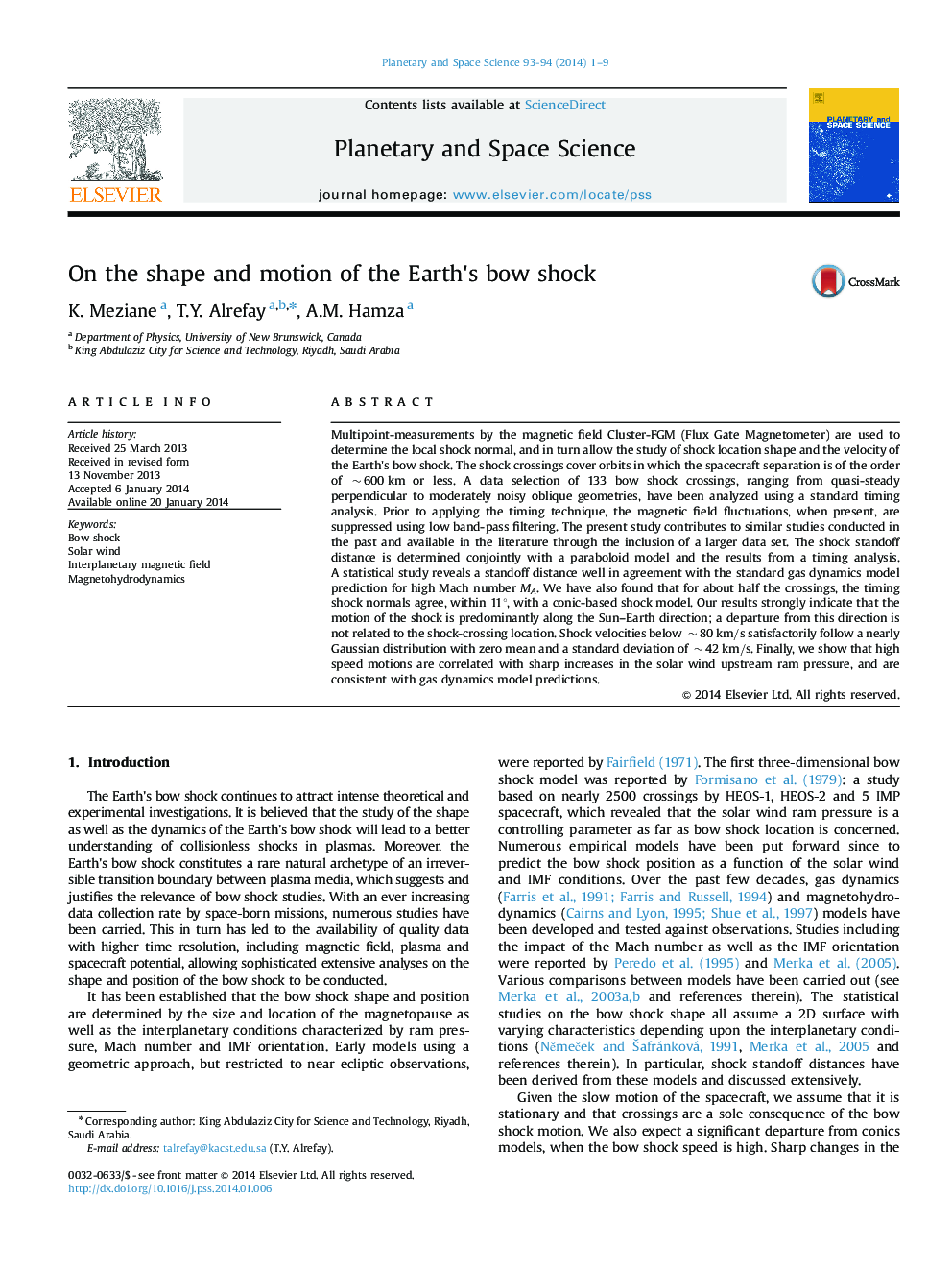| کد مقاله | کد نشریه | سال انتشار | مقاله انگلیسی | نسخه تمام متن |
|---|---|---|---|---|
| 1781143 | 1523943 | 2014 | 9 صفحه PDF | دانلود رایگان |
• The agreement between the timing and model-shock normals is Alfven mach number dependent.
• The bow shock motion is predominantly in the Sun–Earth direction.
• Gaussian shock velocity distribution is found for shock speeds less than ~80 km/s.
• High-speed shock motion is found to be strongly related to propagating discontinuities in the solar wind.
• The empirical results support gas-dynamics models.
Multipoint-measurements by the magnetic field Cluster-FGM (Flux Gate Magnetometer) are used to determine the local shock normal, and in turn allow the study of shock location shape and the velocity of the Earth's bow shock. The shock crossings cover orbits in which the spacecraft separation is of the order of ~600km or less. A data selection of 133 bow shock crossings, ranging from quasi-steady perpendicular to moderately noisy oblique geometries, have been analyzed using a standard timing analysis. Prior to applying the timing technique, the magnetic field fluctuations, when present, are suppressed using low band-pass filtering. The present study contributes to similar studies conducted in the past and available in the literature through the inclusion of a larger data set. The shock standoff distance is determined conjointly with a paraboloid model and the results from a timing analysis. A statistical study reveals a standoff distance well in agreement with the standard gas dynamics model prediction for high Mach number MA. We have also found that for about half the crossings, the timing shock normals agree, within 11°, with a conic-based shock model. Our results strongly indicate that the motion of the shock is predominantly along the Sun–Earth direction; a departure from this direction is not related to the shock-crossing location. Shock velocities below ~80km/s satisfactorily follow a nearly Gaussian distribution with zero mean and a standard deviation of ~42km/s. Finally, we show that high speed motions are correlated with sharp increases in the solar wind upstream ram pressure, and are consistent with gas dynamics model predictions.
Journal: Planetary and Space Science - Volumes 93–94, April 2014, Pages 1–9
